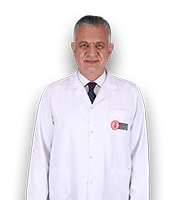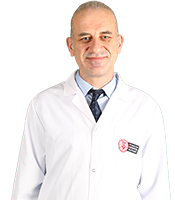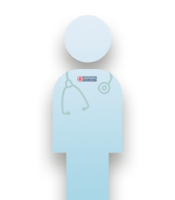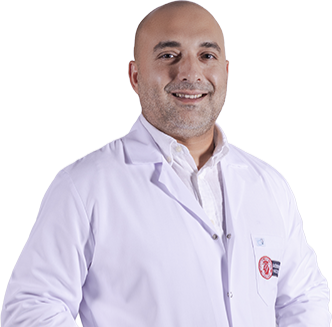What Is Orthopedics and Traumatology?
Orthopedics and Traumatology is the medical specialty dedicated to the diagnosis, treatment, and follow-up of musculoskeletal system disorders. This field encompasses a wide range of structures—bones, joints, muscles, connective tissues, tendons, and nerves.
Orthopedics focuses on congenital or acquired skeletal abnormalities (for example, scoliosis, hip dysplasia, flat feet), degenerative joint diseases (such as osteoarthritis), and sports-related injuries. Traumatology, on the other hand, covers the diagnosis and both surgical and non-surgical management of fractures, dislocations, ligament tears, and other trauma-related injuries.
With today’s technological advances, modern orthopedics goes beyond mere treatment: it employs a multidisciplinary approach aimed at improving quality of life, restoring mobility, and helping patients return to daily activities as quickly as possible.
The Orthopedics and Traumatology department provides comprehensive care for conditions ranging from congenital skeletal disorders to traumatic injuries, from sports-related damage to degenerative joint disease in older adults.
The main conditions we diagnose and treat include:
- Fractures and dislocations
- Muscle, tendon, and ligament injuries (e.g., ACL tears, meniscal tears)
- Spinal disorders (low back and neck herniated discs, scoliosis, kyphosis)
- Joint diseases and osteoarthritis
- Degenerative conditions requiring hip and knee replacements
- Sports injuries
- Congenital orthopedic eformities (clubfoot, hip dysplasia, flat feet)
- Disorders of the hand and upper extremity (carpal tunnel syndrome, trigger finger, De Quervain’s tenosynovitis)
- Foot and ankle problems
- Bone and soft-tissue tumors
- Post-traumatic deformities and non-union fractures (pseudoarthrosis)
- Orthopedic complications of rheumatic diseases
- Nerve compression syndromes and peripheral nerve injuries
All of these conditions may be managed with surgical or non-surgical methods. The choice of diagnostic and treatment strategy is customized to each patient’s age, overall health, and lifestyle.
Which diagnostic methods does our Orthopedics and Traumatology Department use?
In order to accurately identify the source of musculoskeletal conditions and develop the most effective treatment plan, our Orthopedics and Traumatology Department utilizes advanced imaging and diagnostic technologies.
The main methods employed are:
Physical Examination: The first step, during which the specialist assesses the patient’s complaints, range of motion, muscle strength, and areas of tenderness.
X-Ray (Plain Radiography): A fundamental and rapid technique for visualizing bone anatomy, detecting fractures, dislocations, deformities, and osteoarthritis.
Magnetic Resonance Imaging (MRI): Provides detailed evaluation of soft tissues such as muscles, ligaments, menisci, cartilage, and the spinal cord.
Computed Tomography (CT): Used for complex fractures, detailed bone assessment, and joint anatomy analysis.
Ultrasound (US): Preferred for assessing superficial structures like tendons, ligaments, and joint fluid.
Bone Scintigraphy: Particularly useful for monitoring tumors, infections, or non-healing fractures.
Diagnostic Arthroscopy: Involves inserting a small camera into the joint to obtain a direct visual diagnosis; therapeutic procedures can be performed in the same session.
These techniques may be combined based on the type of condition and the patient’s overall health. Early and accurate diagnosis is critical to the success of the treatment process.
Which treatment methods are used in our Orthopedics and Traumatology Department?
In our Orthopedics and Traumatology Department, the treatment plan is fully personalized according to the type and severity of the condition, as well as the patient’s age and lifestyle.
The main post-diagnosis treatment options are classified as follows:
Medication Therapy: Pain relievers, muscle relaxants, and anti-inflammatory drugs to control symptoms.
Casting and Splinting: Immobilization techniques for fractures, dislocations, or ligament injuries.
Physical Therapy and Rehabilitation: Essential for restoring mobility and supporting the healing process in musculoskeletal disorders.
Orthoses and Supportive Devices: Assistive equipment designed to improve walking, balance, or joint stability.
Fracture and Trauma Surgery: Anatomical realignment of broken bones using plates, screws, nails, or external fixation devices.
Minimally Invasive Techniques: Small-incision surgeries that reduce tissue damage and speed up recovery.
Arthroscopic Surgery: Closed-joint procedures of the knee, shoulder, and ankle that allow rapid healing.
Endoscopic Surgery: Minimally invasive release procedures for nerve compression syndromes such as carpal tunnel.
Joint Replacement Surgery (Arthroplasty): Implanting artificial hip or knee joints to restore mobility in advanced osteoarthritis.
Spine Surgery: Interventions for herniated discs, spinal fractures, or curvature corrections (scoliosis, kyphosis).
Tendon and Ligament Repairs: Surgical reconstruction of injuries like ACL tears or Achilles tendon ruptures.
Congenital Orthopedic Corrections: Surgeries for developmental conditions such as hip dysplasia or clubfoot.
Microsurgical Techniques: Precision operations under a microscope to repair nerves, vessels, and fine tissues.
Revision Surgeries: Procedures to correct functional deficits in patients whose previous surgeries did not fully heal.
Tendon Transfers: Restoring function by rerouting healthy tendons to replace damaged ones.
Free Tissue Transfers: Reconstructive procedures that harvest tissue from one area of the body to repair extensive burns, large tissue losses, or post-surgical deformities.
In modern orthopedic practice, non-surgical methods are prioritized whenever possible. Surgical interventions are then planned using the latest technologies and evidence-based approaches to minimize risk and maximize recovery speed.
What surgical procedures are performed in our Orthopedics and Traumatology Department?
At Yeni Yüzyıl University Gaziosmanpaşa Hospital’s Orthopedics and Traumatology Department, we offer both emergency and elective surgical interventions across a wide range of musculoskeletal conditions, achieving high success rates. All procedures are planned in accordance with up-to-date clinical guidelines, minimally invasive techniques, and individualized treatment protocols.
Below is a detailed list of the most commonly performed surgeries in our department:
- Fracture fixation
- Non-union (pseudoarthrosis) repair
- Deformity correction surgery
- Spinal fracture stabilization
- Hand and wrist fracture surgery
- Limb-length discrepancy correction
- Limb-lengthening procedures
- Knee arthroscopy
- Shoulder arthroscopy
- Ankle arthroscopy
- Total knee replacement
- Total hip replacement
- Partial joint replacement
- Lumbar discectomy
- Cervical discectomy
- Spinal canal decompression surgery
- Scoliosis and kyphosis correction
- Anterior cruciate ligament (ACL) reconstruction
- Meniscus repair or removal
- Cartilage repair procedures
- Achilles tendon repair
- Muscle tear repair
- Tendon repair surgery
- Tendon transfer procedures
- Nerve decompression surgery
- Microsurgical finger and limb replantation
- Carpal tunnel release
- Trigger finger release
- De Quervain’s tenosynovitis surgery
- Finger replantation
- Correction of hand and finger deformities
- Hand and wrist infection surgery
- Brachial plexus repair
- Free tissue transfer (flap)
- Post-burn reconstructive surgery
- Developmental hip dysplasia surgery
- Clubfoot correction
- Tumor and cyst excision
- Bone tumor resection
- Soft-tissue sarcoma surgery
- Bone reconstruction and endoprosthetic implantation
All operations take place in our state-of-the-art operating theaters, performed by an academic, specialist team under JCI-compliant patient-safety protocols. We aim not only to treat but to provide a safe, ethical, and comfortable pathway to recovery.
Competence and expertise of Gaziosmanpaşa Hospital’s Orthopedics and Traumatology Department
Yeni Yüzyıl University Gaziosmanpaşa Hospital’s Orthopedics and Traumatology Department provides comprehensive care in the diagnosis, treatment, and surgical management of musculoskeletal disorders. With its strong academic foundation, state-of-the-art technology, and patient-safety–driven multidisciplinary approach, it stands among Istanbul’s leading orthopedics centers.
Since its establishment in 1992, our hospital’s accumulated experience has been a hallmark of quality. In 2014, we became an academic university hospital, seamlessly integrating the latest scientific advances and academic expertise into clinical practice. Our department treats a wide range of conditions—from adult and pediatric orthopedic diseases to sports injuries, spinal surgery and joint replacements, as well as hand surgery and microsurgical procedures—with consistently high success rates.
Thanks to advanced imaging systems, arthroscopic platforms, microsurgical equipment, and modern operating theaters, all diagnostic and therapeutic processes are carried out safely, effectively, and with a patient-centered focus. Moreover, our Joint Commission International (JCI) accreditation—renewed in 2023—underscores our commitment to international standards of patient safety and care quality.
The Gaziosmanpaşa Orthopedics and Traumatology team is composed of academic specialists in every orthopedic subspecialty, microsurgery-trained surgeons, and rehabilitation professionals working in close coordination. This structure ensures that each patient receives a personalized, holistic treatment plan.
Throughout all diagnostic, treatment, and surgical stages, we adhere strictly to the latest scientific guidelines and clinical protocols.
Our principal reference standards include:
- Ministry of Health protocols and guidelines
- American Academy of Orthopaedic Surgeons (AAOS) clinical practice guidelines
- AO Foundation (Arbeitsgemeinschaft für Osteosynthesefragen) principles
- Turkish Orthopaedics and Traumatology Association (TOTBİD) guidelines
- Turkish Orthopaedics and Traumatology Society (TOTDER) guidelines
- Gustilo-Anderson and AO open-fracture classification systems
- MESS (Mangled Extremity Severity Score) guidelines
- Injury Severity Score (ISS) protocols
- Infection prophylaxis protocols
- Thromboembolism prophylaxis protocols
- Open-fracture prophylaxis protocols
By anchoring our clinical practice in these evidence-based guidelines, Gaziosmanpaşa Hospital’s Orthopedics and Traumatology Department not only delivers effective treatment but also promises every patient a safe, ethical, and comfortable path to recovery.



